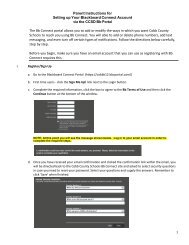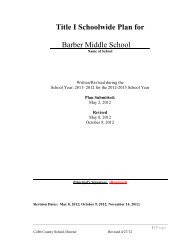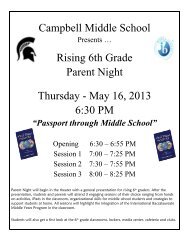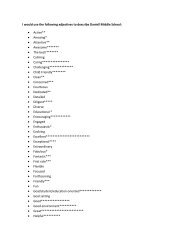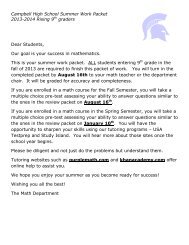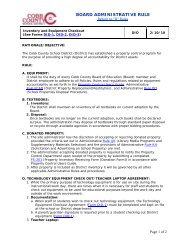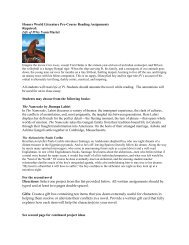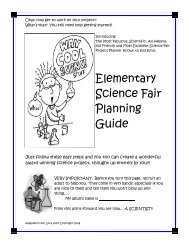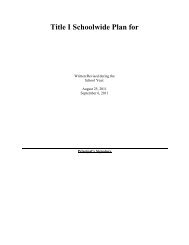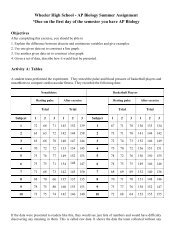Template Task Collection 1 - Literacy Design Collaborative
Template Task Collection 1 - Literacy Design Collaborative
Template Task Collection 1 - Literacy Design Collaborative
Create successful ePaper yourself
Turn your PDF publications into a flip-book with our unique Google optimized e-Paper software.
Variation <strong>Task</strong> 17 <strong>Template</strong>: After researching ________ (informational texts), developing a hypothesis, and conducting an experiment examining________ (content), write a laboratory report in which you explain your procedure(s) and result(s) and confirm or reject your hypothesis. What conclusioncan you draw ________? (Informational or Explanatory/Procedural-Sequential)Variation <strong>Task</strong> 17 Science Example: After researching articles on wind power, developing a hypothesis, and conducting an experiment examininghow wind power translates into useable energy, write a laboratory report in which you explain your procedure and result and confirm or reject yourhypothesis. What conclusion can you draw from the data? (Informational or Explanatory/Procedural-Sequential)<strong>Task</strong> 18 <strong>Template</strong>: After researching ________ (informational texts) on ________ (content), write a ________ (report or substitute) that explains________ (content). What conclusion or implications can you draw? Cite at least _____ (#) sources, pointing out key elements from each source. L2 Inyour discussion, address the credibility and origin of sources in view of your research topic. L3 Identify any gaps or unanswered questions. Optional: Include________ (e.g., bibliography). (Informational or Explanatory/Synthesis)<strong>Task</strong> 18 Social Studies Example: After researching past and present news articles, photographs, and maps on your community, write a reportthat explains how changes over the years have influenced your neighborhood. What conclusion or implications can you draw? Cite at least threesources, pointing out key elements from each source. In your discussion, address the credibility and origin of sources in view of your research topic.Include a bibliography of sources. (Informational or Explanatory/Synthesis)<strong>Task</strong> 18 Science Example: After researching scientific documents on the issue of water contamination, write a report that explains the causes andthe effects of contamination. What conclusion or implications can you draw? Cite at least four sources, pointing out key elements from each source.Include a bibliography of your sources. (Informational or Explanatory/Synthesis)Variation <strong>Task</strong> 18 <strong>Template</strong>: After researching ________ (informational texts), write a ________ (report or substitute) in which you explain________ (content). What ________ (conclusions or implications) can you draw ________ (content)? L2 In your discussion, address the credibility andorigin of sources in view of your research topic. L3 Identify any gaps or unanswered questions ________ (content). Optional: Include ________ (e.g.,bibliography, citations). (Informational or Explanatory/Synthesis)Variation <strong>Task</strong> 18 Example: After researching past and present news articles, photographs, and maps about your community, write a report inwhich you explain how changes over the years have influenced your neighborhood. What conclusion can you draw about the effect onneighborhoods? L2 In your discussion, address the credibility and origin of sources in view of your research topic. L3 Identify any gaps or unansweredquestions about your community’s history. Include citations and a list of sources. (Informational or Explanatory/Synthesis)<strong>Template</strong> <strong>Task</strong> <strong>Collection</strong> 1 | © <strong>Literacy</strong> <strong>Design</strong> <strong>Collaborative</strong>, November 2011 24




